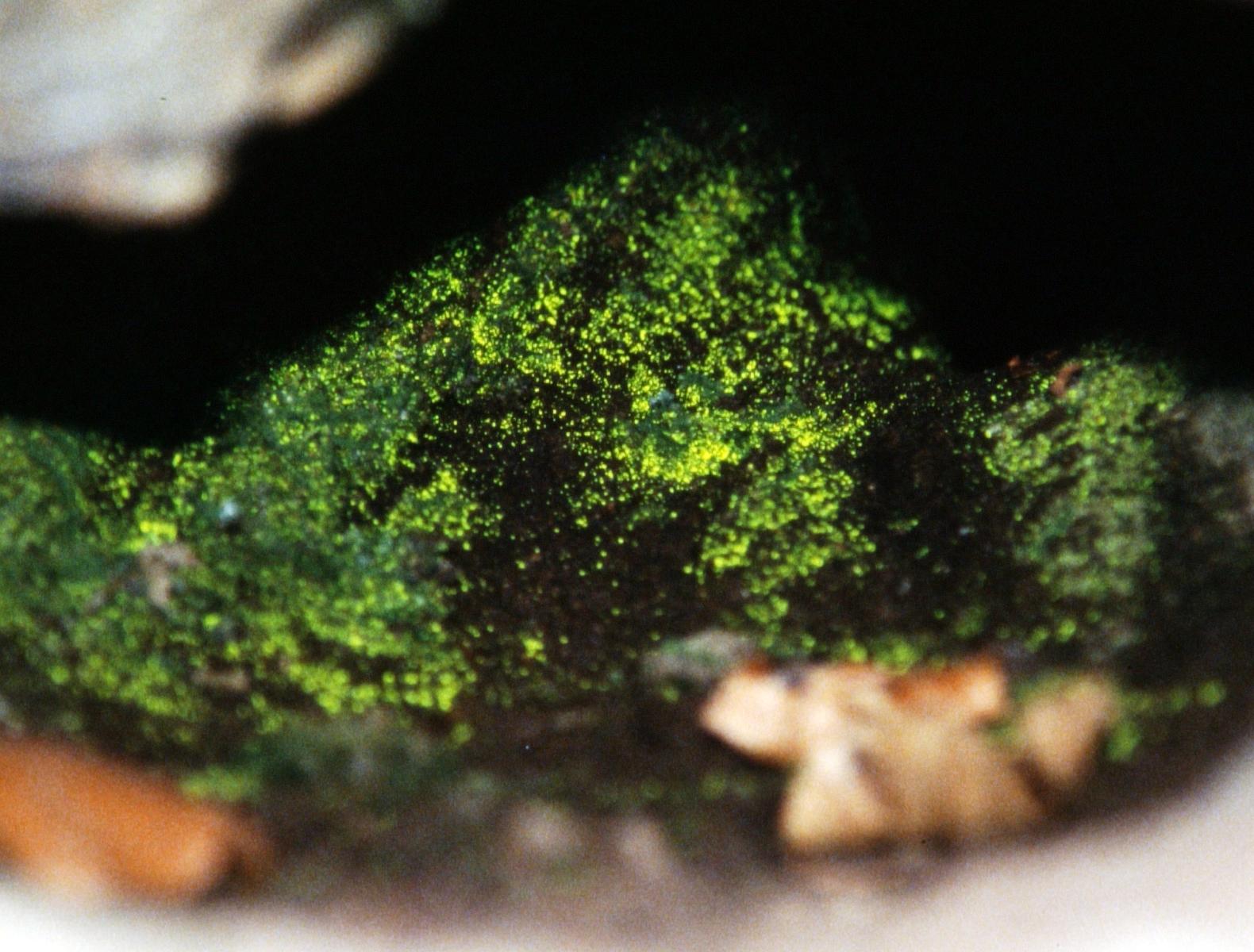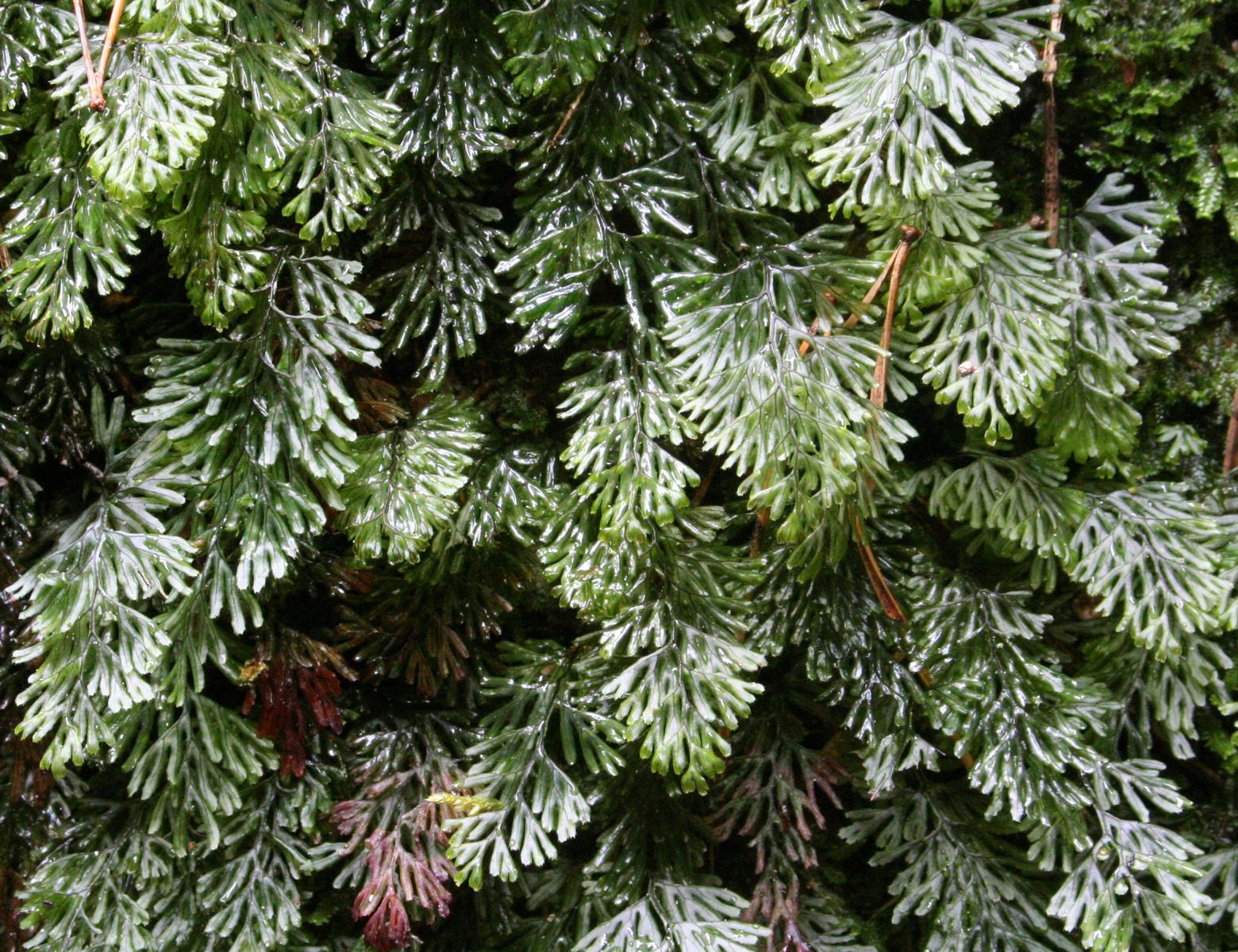The many different forms of ferns and mosses, and the mostly bright green colour of these spore-bearing plants (cryptogams), are impressive. The unusual microclimatic conditions to be found on the cliff faces and in the gorges of this region – with only slight temperature variations and high air humidity – make it a Garden of Eden for numerous species.
The diversity of moss species is enormous. More than 380 different mosses can be found in the Nature Park. That equates to around two-thirds of all species occurring in Luxembourg and a fifth of those in Europe. The diversity is particularly striking in the Beaufort-Berdorf-Echternach region: as many as 252 species have been found in an area of 16 km2, and more than 140 in some areas measuring barely 1 km2 (areas such as the Schnellert, the lower part of the Aesbaach valley, the Halerbaach). One very special specimen is luminous moss (Schistostega pennata). It is not the moss plant itself that glows but the protonema, a thin, algae-like down that is its earliest stage of development. The lens-shaped cells of the protonema reflect the faint light, like a cat’s eyes in the dark.

The number of species of fern is smaller, but over 80% of the ferns that grow in Luxembourg can be found in the region of the Nature Park. Some species, like the widespread eagle fern, the common polypody and hart’s tongue fern, are easy to recognise. Others are of such immense interest to plant geographers that even in the 19th century – before the area was known to tourists – fern specialists used to come here looking for unusual species: for example, this is how, in 1823, the Tunbridge filmy fern (Hymenophyllum tunbrigense) was found here, which normally tends to grow by the sea. This dwarf among ferns is often described as the jewel of the Luxembourg Sandstone. Its colonies are primarily put at risk by careless recreational activity. Another example of a filmy fern that is of international importance is the Killarney fern (Trichomanes speciosum). It was first discovered in this region in 1993. What is remarkable is that it is not the fern itself that is found here but an even more unprepossessing stage of its development that looks like a ball of green cotton.

The enormous diversity of species and their countless distinctive features have resulted in the Nature Park becoming well-known to botanists from far beyond Luxembourg’s borders. In order to preserve these treasures for future generations, it is essential to protect the unique and in some cases threatened habitats of spore-bearing plants. Everyone can help, for example by observing the rock climbing rules and not leaving the footpaths.
According to the Grand-Ducal Regulation of 8 January 2010, all ferns, mosses and lichens that occur on the Luxembourg Sandstone are protected in their entirety.